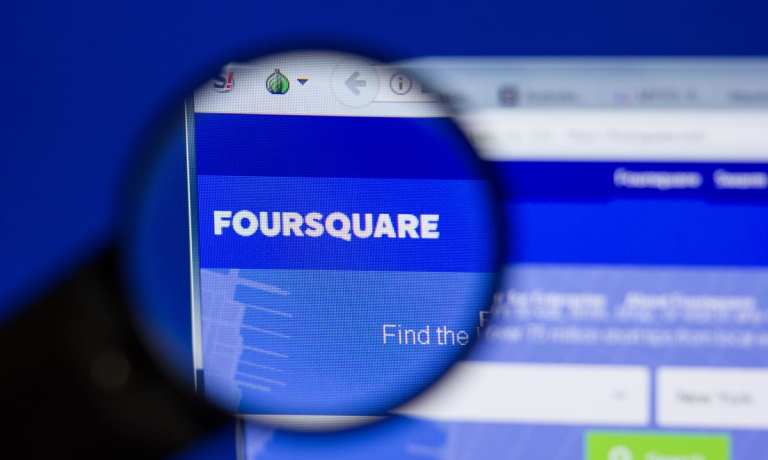
For Foursquare, it has been quite a journey from its launch in 2009 to 2020. On Friday (Nov. 6), CEO David Shim announced his intention to step down as head of the company by Jan. 1, 2021. He will be succeeded by Gary Little, a member of the company’s board and managing director of the Raine Group.
Shim, speaking to The Wall Street Journal, noted that he is leaving the company after a decade in the job to pursue new opportunities. The change also follows the firm’s merger last spring with data location provider Factual. The firm retained the Foursquare name and pivoted toward a new use case: a marketing platform that aggregates location data and provides software to businesses alongside that data.
The Factual merger quickly followed Foursquare’s acquisition of the location data company Placed from Snap Inc. That addition was financed with $150 million in new funding raised care of the Raine Group – and signified, according to Foursquare’s public statement at the time, “Raine’s belief that the location space has enormous growth ahead over the next decade, not only for marketing” but in such industries as retail, dining and real estate.
It’s that growth potential that Foursquare has been aiming to tap since its very splashy launch at SXSW in 2009, which Co-founder and Executive Chairman Dennis Crowley told Fast Company in a recent interview mostly astounded them when it was all over.
“I remember feeling very self-conscious about the app that we had made. Because Foursquare 1.0 was a little bit of a game with the badges and the mayorships and checking in and the city guide. It was a lot of stuff mashed together. And we actually thought people would think it was a dumb idea. But they didn’t. People loved it. And it was much better received than we expected it to be,” Crowley noted.
Well-received though it was initially, its popularity as a social media channel started to dim as platforms like Instagram, Twitter and Snapchat began dominating the market, and ever-fickle consumers found “there were sexier things to do” than rack up Foursquare mayorships. Foursquare began to pivot away from the social platform for which it was known, spinning its check-in business geared toward consumers into a separate unit called Swarm – and centering its core business on turning its vast treasure trove of consumer location data into something usefully saleable to business, Mike Harkey, Foursquare’s vice president of business development, told PYMNTS in 2016.
“Merchants come to us and say, ‘What can you tell me about what’s happening in my market?’” Harkey said. “We’re uniquely positioned with this data set to tell something interesting to merchants on the insight side, because we’ve got this database of 85 million places and we use it to solve real business problems for merchants.”
What Foursquare has been most keenly interested in bringing to market over the last serval years is a better way for merchants to manage what Hawley called the “online-to-offline conversion funnel that is the holy grail for advertisers and merchants.” It is a conversion that is hard to successfully come by, he noted, because the kinds of insights needed to measure real-world digital activity is historically not the kind of data easily gleaned from pixels and performance data alone.
The question facing Foursquare now is something of a unique one: How useful can location data really be, if the consumer’s location is most likely to be “in their living room?” It’s a place they are planning to be for quite some time, PYMNTS’ recent survey data has demonstrated, as the average consumer now anticipates it won’t be until fall 2021 when they begin seriously resuming their pre-pandemic activities. That same data also demonstrate that what will get them back out there again will be a widely-deployed, effective vaccine.
There might still be something to be learned from location data – particularly if Foursquare can find places where consumers are consistently bucking the trend and getting back out there, despite their increasing general will to hunker down for the next 11 months. But consumers staying in and actively avoiding the places they used to regularly move between means less data is feeding into Foursquare. They are now getting so closely tied to their pandemic context that its usefulness is debatable.
Nonetheless, Foursquare’s departing CEO told The Journal that now that both Factual and Placed are fully integrated into the Foursquare machine, the firm is ready to take on the future without him.
Foursquare enjoyed its first profitable Q4 of the 2020 fiscal year, and reports that Foursquare and Factual together generated more than $150 million in revenue in 2019.